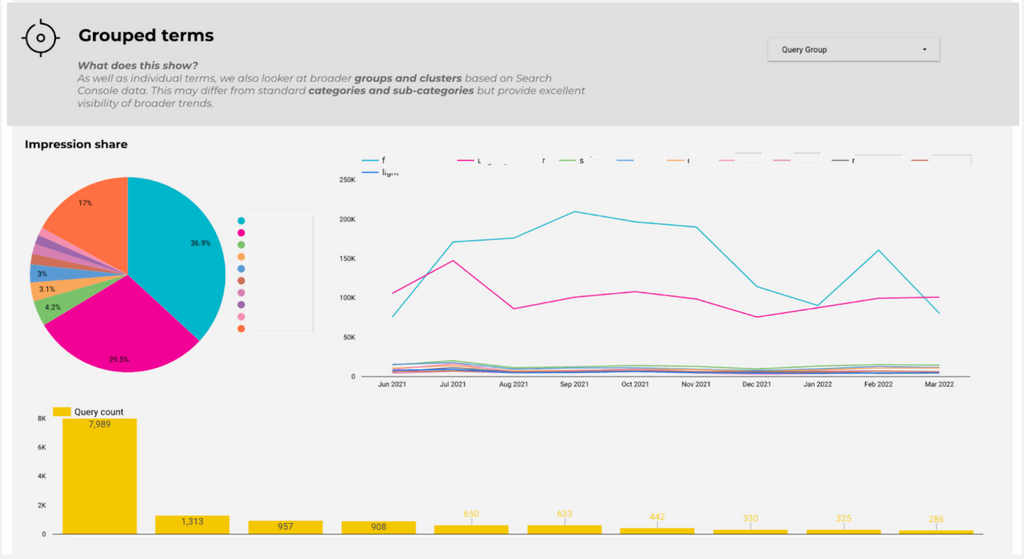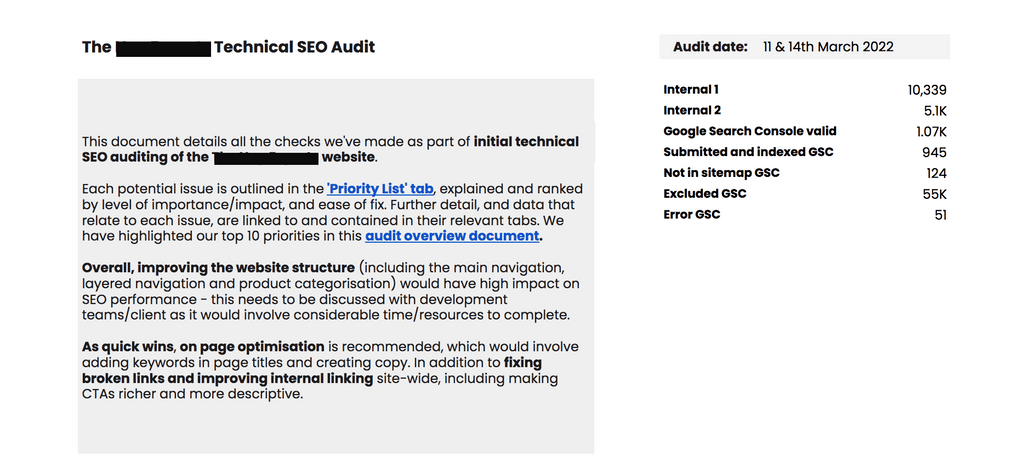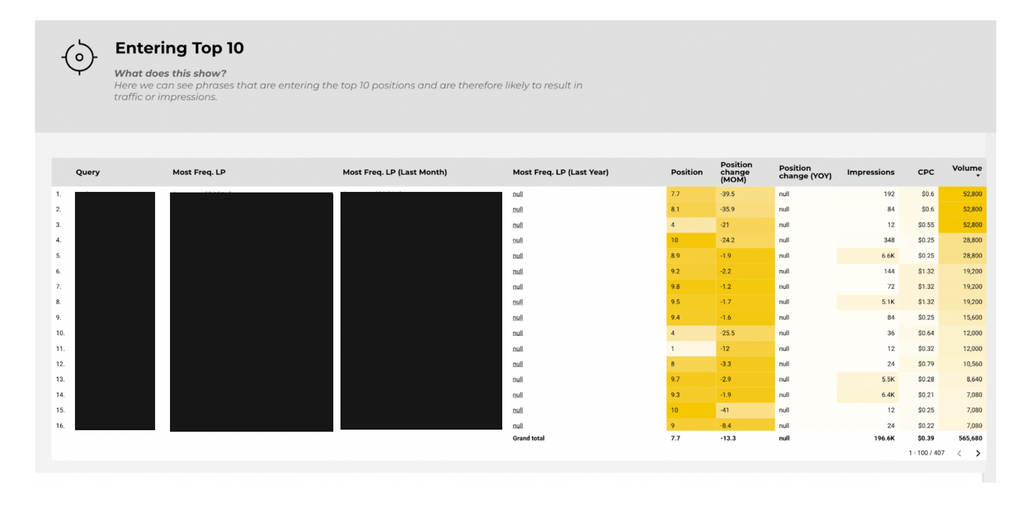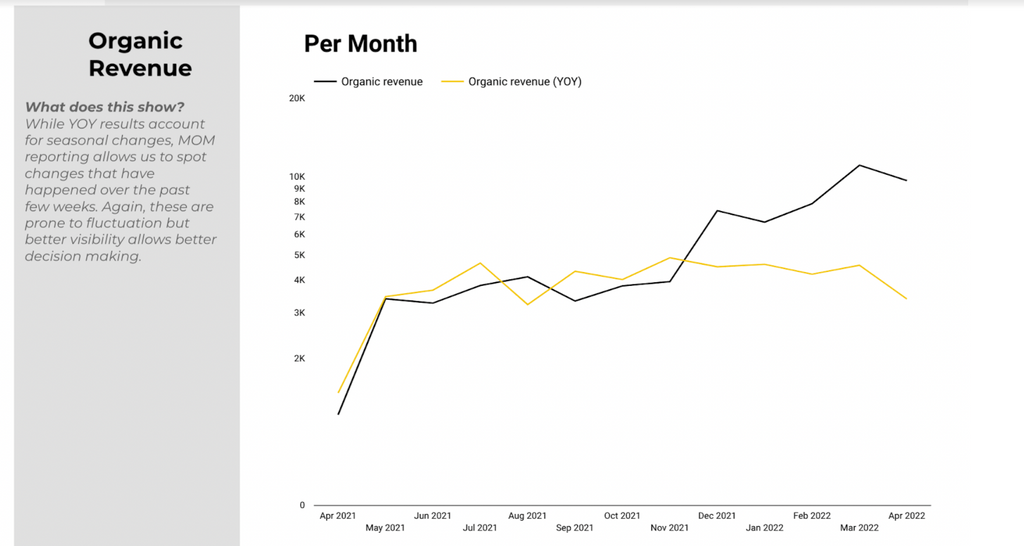What does month one of a project with Blink SEO look like?
The first month of any new digital marketing project is a critical one – it’s where the agency gets to know the client, where the foundation of their strategy is built. It’s also a pretty good indication of how the two parties will work together, and what will be the priorities for the project moving forward.
We’ve mentioned before that so many agencies immediately jump straight into work such as keyword research when starting with a new client. Yes, this is a critical part of the process and it’s something with which we take great care, but we’ve found that there’s so much more to be done before this task is carried out.
This is generally what’s known as our onboarding phase. It’s where we get to know our new client, understand their problems and goals and take a long look at what their data is telling us – all before keyword research is undertaken. Only then can we prepare next steps to help them achieve the results they’re looking for.
To show you what this process typically looks like, we’ve mapped it out in detail below. We’ve even broken down what the first month of work has looked like with a new client we secured through our partners at ITQ Digital.
It’ll show you exactly what that first month looks like as a client of Blink, as well as the huge amount of work we’re able to accomplish.
What does our onboarding process look like?
Good agencies move quickly. This is because without task implementation, you’re not going to see any results. But in order to implement the right work that’s going to really make a difference, you first have to understand the project and identify what this looks like in the first place.
Some agencies can take months to get this ball rolling, and of course things like strategic aspects of a project are going to take a little longer, but there’s no reason why other critical work can’t be carried out quicker.
How is something like this possible? Through detailed SEO processes. They’re a set of proven tasks that guarantee that all necessary steps are taken when beginning work with a new client, and that they meet the high standard our agency strives for.
For us, our onboarding process typically involves:
- Client discovery
- Data set-up and analysis
- Initial research and next steps
Client discovery
When we begin work with a new client, we always start with the discovery phase. This is where we ask clients critical questions such as:
- Who is your ideal customer, and how do you think they perceive your brand?
- What are your current marketing tactics and activities?
- What’s your brand story? What makes you stand out?
- How would you describe your business?
- What makes you unique, and how can you prove it?
It’s also where we pick up any necessary things like marketing strategy documents, branding guidelines, user personas, customer survey data, etc.
Essentially this portion of our onboarding process is all about not just understanding the critical aspects of your brand, but getting a sense of how you understand your brand. We’ll fill in the blanks where necessary, or bring in someone from the outside to help. This is because without this information, our high-impact tasks just won’t do as much good.
For example, we’ll use this stage to pin down information such as value propositions, points of differentiation and user pain points.
These are all crucial to our process for category and sub-category pages. Our usual template for this can be seen below, and this is something we’ll writing about more in the future.
Data set-up and analysis
Next comes our data set-up and analysis. This is where the conceptual turns to real numbers, where we use our custom-built metrics to understand how your business is performing, and what’s driving that performance.
This is based on a combination of data sources, including Search Console, Analytics and Google Ads APIs, as well as custom integrations with BigQuery, and allows us to not only monitor a number of metrics at a large scale, but also prioritise effectively and track the impact of our work.
Some key data dashboards we create include:
- Brand vs. non-brand terms – We take great care to understand where your revenue is coming from, primarily whether or not it’s coming from brand vs. non-brand search terms, or both. This is because relying too heavily on one can leave you either open to competition or missing prime opportunities for growth.
- Keyword performance – We look at clusters and groups of search terms that have seen the biggest fall in revenue and visibility. Our data processes mean we can track, sort, filter and analyse millions of keywords at a time, and automatically categorise and define groups of phrases that represent opportunities for optimisation.
- Category/sub-category performance – With our custom metrics, we’re able to define product categories and break categories out to highlight changes, identify categories or subcategories that are rising or declining, as well as track keyword groupings and revenue over time.
- Striking distance – This is one of our quick win tactics, where we take a look at all keywords currently ranking in positions that are close to being likely to generate some revenue.
- Cannibalisation – Keyword cannibalisation can be a major issue for eCommerce sites. This can be caused by a number of factors: new products, categories or page updates, or even changing intent in the SERPs. Here we monitor queries that show multiple landing pages over a period of time and look for those with a small percentage variation between URLs in order to spot potential issues.
It’s these numbers that dictate our high-priority tasks as well as quick wins, which then influences our future strategy. We then make a VPI (value, profitability and investment) list, which consists of a list of recommendations with scores of high, medium or low in regards to their value, profitability and time investment required. This is then factored into the project roadmap.
Keyword research and next steps
At this point, we’ll also drum up a unique change log for each client. This involves tracking all key updates to a site – like content updates or on-page optimisation – which is then used as annotations over key data (like traffic and revenue). It’s this that provides context to the work we’re doing, and allows us to look back and take note of what has made the biggest impact.
And yes, next generally comes the keyword research phase. With all this great data we’ve generated, we can now focus on the phrases that’ll not only have the best chance at delivering greater volumes of traffic, but sales too.
From here comes our project roadmap. We outline our initial goals including those VPI items we mentioned earlier, and assign deliverables. This month also features an internal kickoff meeting plus a kickoff meeting between the client and their designated Account Manager, as well as weekly check-ins to make sure the client always knows where we’re at.
After this, the high-impact work begins!
Onboarding with a real Blink client
It’s all well and good to outline what this looks like from a theoretical perspective, but let’s now take a look at a real life example of a project we recently began with a new client.
This client came to us via our partner ITQ Digital, who had been brought in to improve the user experience and overall look and feel of the client’s site.
Our initial client discovery phase showed that the company stood out from other competitors on the market from a welfare perspective. Their founder is a licensed adviser in her field, they have many connections in the welfare sector of their industry, they have a reputation for being welfare-focussed, and their products are all sourced with welfare firmly in mind.
We were also able to discern their typical customer and how they likely perceive their brand, as well as the company’s current marketing strategies.
From there, we moved onto developing a data toolkit, which identified keywords that have seen the biggest falls in ranking and revenue. For this particular client, we were able to analyse more than 50k relevant keywords all in one go, clustering them by category, subcategory, product and intent. You can see a few examples from this client’s data toolkit in the screenshots above.
As with many eCommerce projects, this is particularly important. The data quickly showed a misalignment with categorisation and search traffic. Put simply, we could see that people are actively searching by category, rather than the product itself, which is what the navigation and main architecture is currently structured around.
This means a site restructure would be the main priority. As a quick win though, we optimised headings, metadata and page copy to boost the relevancy of category pages, as they don’t currently feature a lot of content, and to regain recently lost rankings. Our aim was to preserve what’s already ranking well and regain organic visibility and revenue for some lost, relevant search terms.
We then carried out a technical audit. This typically involves using a range of tools to assess the site’s overall technical health, identifying any issues in things like structure, indexability, duplication and formatting that need to be resolved to ensure the site can perform well in the SERPs.
Through the audit, we identified again that restructuring the main website navigation is the key priority. We also found more quick on-page wins, including fixing broken links, improving internal linking sitewide and making CTAs richer and more descriptive.
With all this completed, we were then able to research and finalise a new main navigation structure, as well as begin work on the new layout plan/URL mapping, implement the initial on-page optimisations, begin category and subcategory optimisation where possible ahead of the navigation updates, repair, replace and add internal links, and brief the ITQ team on developer issues to repair as a priority.
All this, in the first six weeks. Through just quick wins alone, our client is now ranking on the first page for over 400 new terms, bringing in an additional 200k impressions with a combined potential search volume of 565,000.
Already, this looks to be having a clear impact, with organic traffic up over 258%.
The new navigation structure and URLs should be live in May, followed by a complete overhaul of category pages, so we expect to see even stronger results in mid-late May.
The first month of any new project can and likely will be a whirlwind, but it’s undoubtedly the most important to get right. If you’d like to see what kind of work we could achieve for your business in just a month, get in touch.
Get in touch
Have a problem that Blink can help with? Let us know more about your project below and we’ll be in contact as soon as we can.







